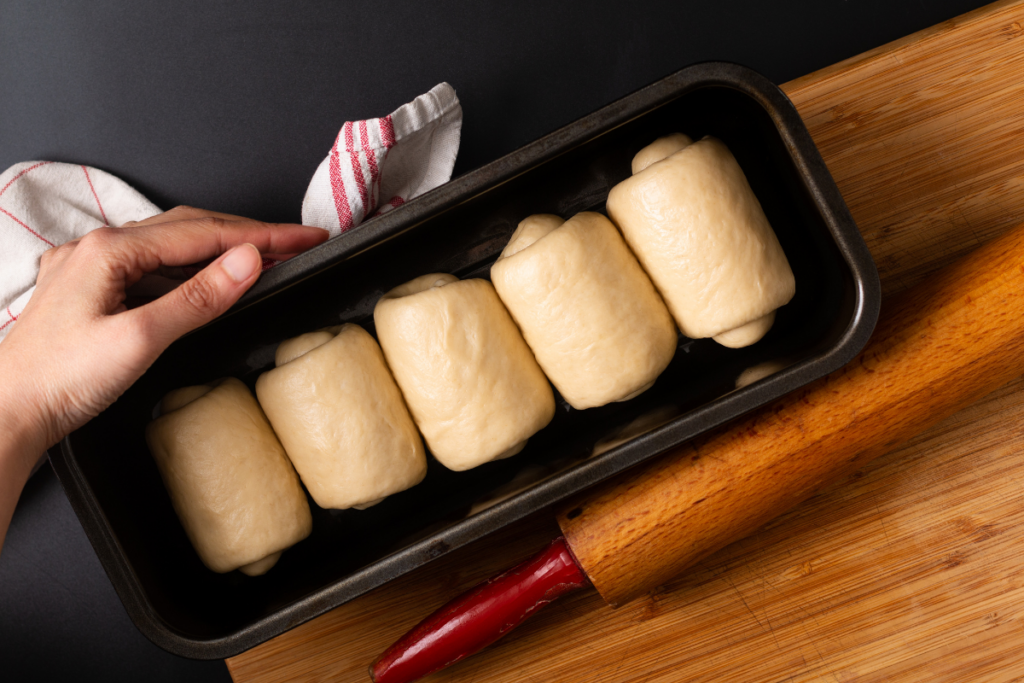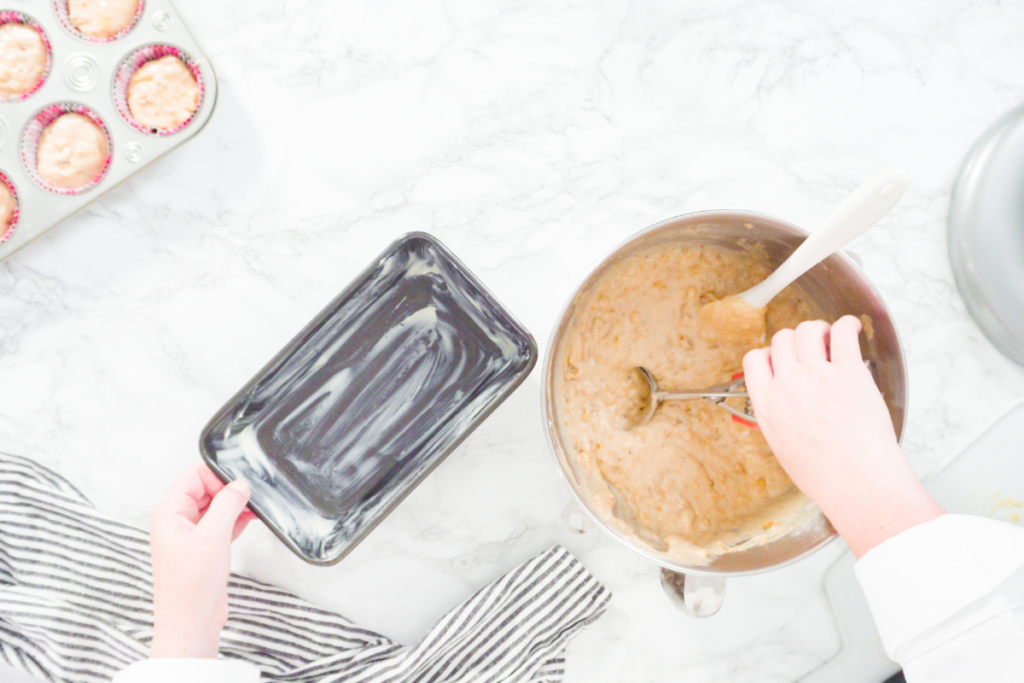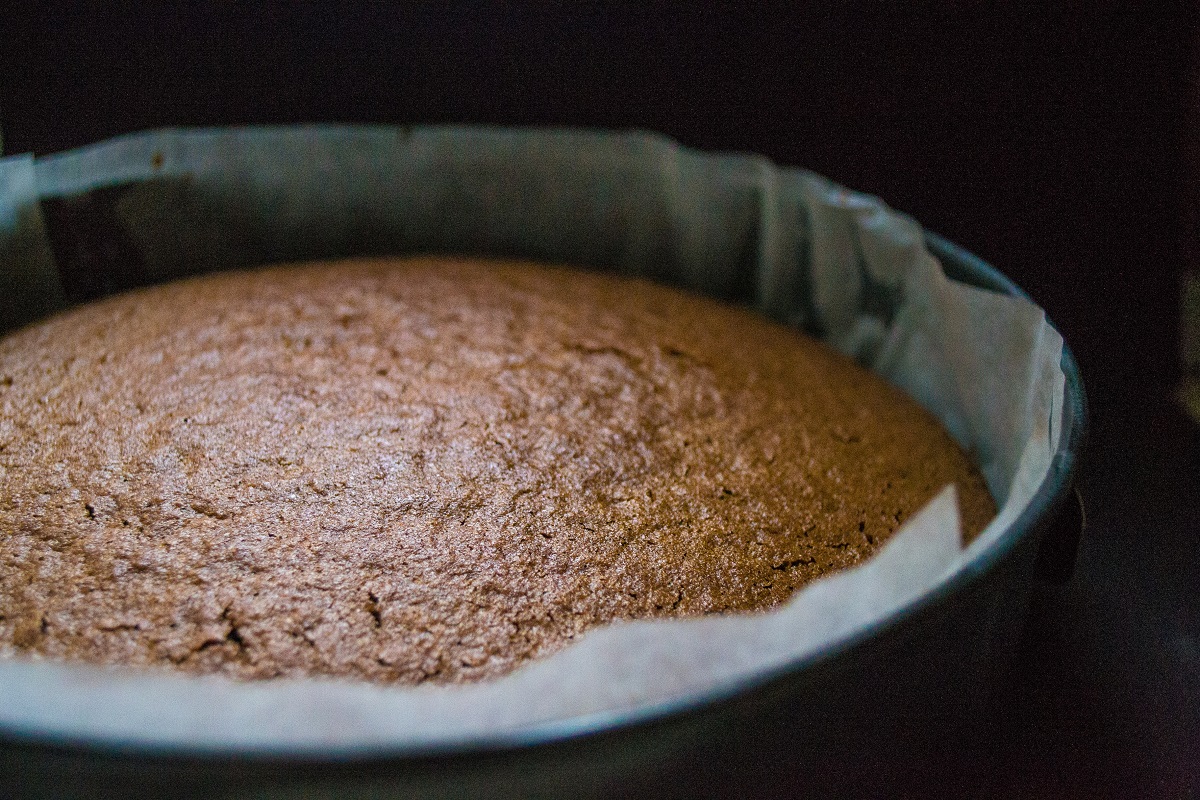If you want to know how to line a loaf pan with parchment paper, you might enjoy reading this article.
Parchment paper prevents the batter from sticking to the pan, making it easier to remove the finished product.
In this article, we will guide you through the process of lining a loaf pan with parchment paper, step by step.
Firstly, it is important to choose the right parchment paper.
Make sure to use parchment paper specifically designed for baking, as wax paper or other types of paper may ignite or melt in the oven.
Once you have the right parchment paper, measure the length and width of the inside of your loaf pan, and cut a piece of parchment paper that is slightly larger than the measurements for the pan.
Next, fold the edges of the parchment paper over the ends, as if you were wrapping a gift, folding in the corners.
Then, lift your shaped parchment off the pan, flip your pan right-side up, and plop the shaped parchment paper liner into the pan.
It should fit snuggly with no creases.
You can also apply the same technique to 8×8-inch and 9×13-inch pans.
With these simple steps, you can ensure that your baked goods come out of the pan easily and look perfect every time.

How To Line A Loaf Pan With Parchment Paper
Lining a loaf pan with parchment paper is an easy way to ensure that your baked goods come out of the pan perfectly every time.
Here are the steps to follow:
Cutting the Parchment Paper
- Measure the length and width of the inside of your loaf pan.
- Cut a piece of parchment paper that is slightly larger than the measurements for the pan.
- Cut the parchment paper into a rectangular shape for the best fit.
Fitting the Paper into the Pan
- Flip your loaf pan upside down.
- Place the parchment paper over the bottom of the pan.
- Press the parchment paper to the pan to create creases.
- Remove the parchment paper from the pan and fold along the creases.
- Place the folded parchment paper into the loaf pan, pressing it down into the corners.
- Make sure the parchment paper fits snugly with no creases.
Smoothing Out the Edges
- Run your fingers along the edges of the parchment paper to make sure it is pressed against the sides of the pan.
- Use a spoon or spatula to press the parchment paper against the corners of the pan.
- Trim any excess parchment paper that is sticking up above the edges of the pan.
By following these simple steps, you can easily line your loaf pan with parchment paper and ensure that your baked goods come out of the pan perfectly every time.
Choosing The Right Loaf Pan
When it comes to baking, choosing the right loaf pan is just as important as selecting the right ingredients.

A good loaf pan will help ensure that your baked goods come out just the way you want them to.
Here are some things to consider when choosing a loaf pan:
Size and Material
The size and material of the loaf pan can affect how your baked goods turn out.
Loaf pans come in various sizes, but the most common sizes are 8.5 x 4.5 inches and 9 x 5 inches.
Make sure to choose a size that fits your recipe.
The material of the loaf pan can also affect the outcome of your baked goods.
Loaf pans can be made of metal, glass, or silicone.
Metal pans are the most common and are great for baking.
Glass pans are good for monitoring the baking progress and can also be used for serving.
Silicone pans are flexible and easy to clean but may require additional support when baking.
Non-Stick vs. Regular
Non-stick loaf pans have a coating that makes it easier to remove the baked goods from the pan.
However, non-stick pans may not brown the crust as well as regular pans.
Regular loaf pans require a bit of greasing or flouring before use but can produce a more evenly browned crust.
When choosing between non-stick and regular loaf pans, consider the type of recipe you are making and your personal preference for crust color and texture.
By considering the size and material of the loaf pan, as well as whether to choose non-stick or regular, you can ensure that your baked goods come out just the way you want them to.
Baking Tips With Parchment Paper
When it comes to baking, parchment paper is a baker’s best friend.
It can be used for lining cake pans, cookie sheets, and of course, loaf pans.
Here are a few tips to help you get the most out of using parchment paper in your baking.
Temperature Considerations
Parchment paper is safe to use in the oven, but it’s important to keep in mind that it has a maximum temperature limit.
Most parchment paper is safe to use at temperatures up to 420°F (215°C).
If you plan on baking at a higher temperature, you’ll want to look for parchment paper that is specifically labeled as heat-resistant.
When using parchment paper in the oven, it’s also important to make sure that it doesn’t come into contact with any open flames or heating elements.
This can cause the paper to catch fire, which can be dangerous.

Removing the Baked Loaf
One of the benefits of lining a loaf pan with parchment paper is that it makes it easier to remove the baked loaf from the pan.
To do this, simply lift the edges of the parchment paper and gently pull the loaf out of the pan.
If the loaf is still sticking to the pan, you can try running a knife or spatula around the edges of the pan to loosen it.
Another option is to let the loaf cool completely in the pan before attempting to remove it.
This can help prevent it from breaking apart or sticking to the pan.
Overall, using parchment paper when baking can make the process easier and more enjoyable.
Just remember to keep an eye on the temperature and use caution when handling the paper in the oven. Happy baking!
Cleaning and Storage Tips
Cleaning the Pan Post-Baking
Cleaning the loaf pan after baking is essential to maintain its longevity.
You can use warm water and dish soap to clean the pan.
Make sure to scrub the pan gently with a soft sponge or brush to avoid scratching the surface.
Avoid using abrasive cleaners or steel wool, as they can damage the non-stick coating of the pan.
If there is any stubborn residue left on the pan, you can use baking soda or vinegar to remove it.
Simply sprinkle baking soda on the pan and add a few drops of water to make a paste.
Spread the paste all over the pan and let it sit for a few minutes.
Then, scrub it gently with a sponge or brush and rinse it with warm water.
Alternatively, you can soak the pan in vinegar for a few minutes and then scrub it with a sponge or brush.
After cleaning the pan, make sure to dry it thoroughly before storing it.
You can use a clean towel or air dry it.
Avoid stacking the pans on top of each other, as it can cause scratches on the surface.
Storing the Parchment Paper
Parchment paper is a great way to line the loaf pan and prevent sticking.
After using the parchment paper, make sure to dispose of it properly.
You can recycle it if it is clean and not greasy.
If you want to reuse the parchment paper, you can store it in a dry and cool place.
You can fold it neatly and store it in a plastic bag or container.
Make sure to label the container with the type and size of parchment paper for easy access.
Before reusing the parchment paper, make sure to inspect it for any tears or damages.
If it is torn or damaged, discard it and use a new one.
Reusing damaged parchment paper can result in uneven baking and sticking.
By following these cleaning and storage tips, you can maintain the quality and performance of your loaf pan and parchment paper for a longer period.

Key Takeaways
Lining a loaf pan with parchment paper is a simple technique that can make a big difference in the outcome of your baked goods.
Here are some key takeaways to keep in mind when lining your loaf pan:
- Use the right size parchment paper: Measure the length and width of your loaf pan and cut a piece of parchment paper that is slightly larger than the measurements for the best fit.
- Fold the parchment paper: Fold the edges of the parchment paper over the ends, as if you were wrapping a gift, folding in the corners. This will help the paper fit snuggly with no creases.
- Apply the parchment paper liner: Lift your shaped parchment off the pan, flip your pan right-side up, and plop the shaped parchment paper liner into the pan. You can grasp the parchment paper and use it to pull the loaf out of the pan easily.
- Other options: Cooking sprays or a good slathering of “cake goop” can also do the trick, but lining the pan with parchment paper is one of the most reliable ways to ensure that your loaf comes out of the pan easily.
By following these simple steps, you can ensure that your baked goods come out of the loaf pan easily and look great.
Happy baking!
